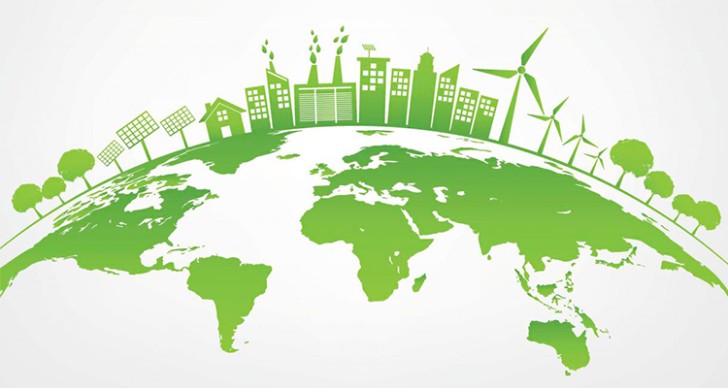Zigurat Global Institute of Technology
Blog / Disruptive Technologies
Circular Economy as a Countermeasure to Climate Crisis
Categories

As you might remember, the COP25 marked by fraught negotiations in early December, didn’t manage to tackle the climate crisis. It’s in that context, that we take a look at the circular economy as a medium to tackle climate change.

Image source: www.ellenmacarthurfoundation.org
Circular Economy Explained
As the name indicates, the circular economy (CE) seeks to replace the current linear economic model with regenerative one that would allow more efficient use and reuse of resources. With changing our usual ‘take-make-waste’ model for something less short-sighted might help us to tackle the challenges ahead. That circular or regenerative model includes managing the resources at our disposal with more care, making better use of products, and have a plan for what to do with the discarded materials afterwards. So to sum up, it’s built on three principles: - Design out waste and pollution - Keep products and materials in use - Regenerate natural systems In a report published by the Ellen MacArthur Foundation, it is estimated that when applied to the food system and cement, steel, plastic and aluminum industry circular economy strategies could help reduce global emissions and bring them (key industry materials 40% and the food system 49%) closer to their respective net-zero emissions targets for 2050. On the other hand, in addition to greenhouse gas emissions, a circular economy offers a wide array of system benefits. It presents a multi-trillion-dollar economic opportunity as well as additional societal and environmental benefits. Or in numbers, circular economy has an economic potential of up to US $4.5 trillion, and could generate up to 6 million new jobs by 2030 worldwide.
Circular Economy at SMART_CITIES_Explained
The circular economy in energy and waste management was also the first topic discussed at SMART_CITIES_BCN event in the past December. The discussion panel was moderated by Albert Mateu, Zigurat’s professor for Master’s in Global Smart City Manager and counted with the presence of Verónica Kuchinow, an expert in industrial symbiosis, Maria Salamero from Aigües de Barcelona and Cristina Guillén, an expert in energy efficiency and also a professor for the master’s program. Albert Mateu inaugurated the discussion board by identifying the citizens as the focal point of any smart city initiative and said that even if the most publicized events tend to concentrate on the new technologies, it’s actually the people who are at the center of it all. In fact, people themselves are skeptical about the power they give to the governments or private companies over their data, as the public’s rejection of the Quayside development on Toronto’s waterfront showed. Maria Salamero brings the audience’s attention to the consequence of having regulations in place. She concludes that we can’t insist on citizens becoming more sustainable in their habits if the framework of the city doesn’t support the initiative with regulations and policies. That means that if we call for people to use fewer cars and more public transport or bicycles, the administration must provide the infrastructure to do so. Cristina Guillén believes that clear communication is the key to wider adoption of circular economy practices since without a good understanding of the proceedings it’s hard to expect the citizens to embrace its potential fully. In reference to COP25, she looks for the positive in the whole affair. And the fact that the EU stayed firm shows that they are ready to lead the way. She explains that the circular economy is key to achieving the goals that EU has set for GHG emissions reduction. Cristina Guillén also brings an example from Barcelona, the 22@ neighborhood where they have a distribution network for waste heat to use in the households. Maria Salamero agrees and says that communicating to people what they can and should do, does actually give results. As an example, she talks about the wet wipes that clog the water purification plants of Aigües de Barcelona. Thanks to a communication campaign and other channels who picked up the message, they have reduced 20% of the wet wipes that make it to the plants. For Verónica Kuchinow, it’s about cultural change, a shift that we all need to make in our minds. And an important factor of that shift is to start to think and act more as a collective. Because to change our current economic model, the citizens, organizations and the public sector must find common ground and interest. She concludes that the only way to accelerate the change towards a more regenerative model is to accelerate the shift towards a more collaborative culture through training and raising awareness. To conclude la discussion, the participants concluded that technology we might need to jump-start the big change is already around. It’s question of having the people on board and working for collective goals. Image source: http://www.evaballarin.com/




